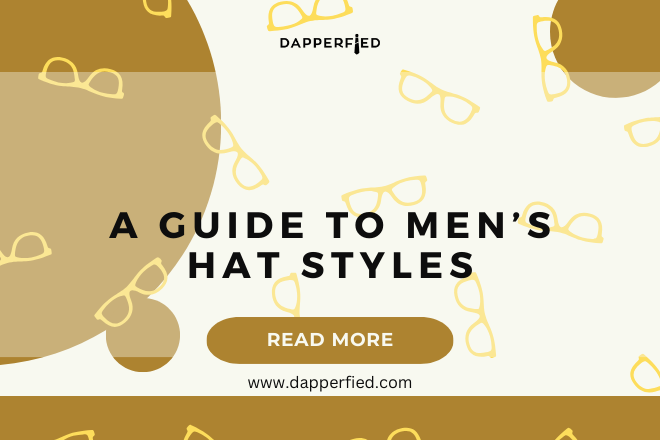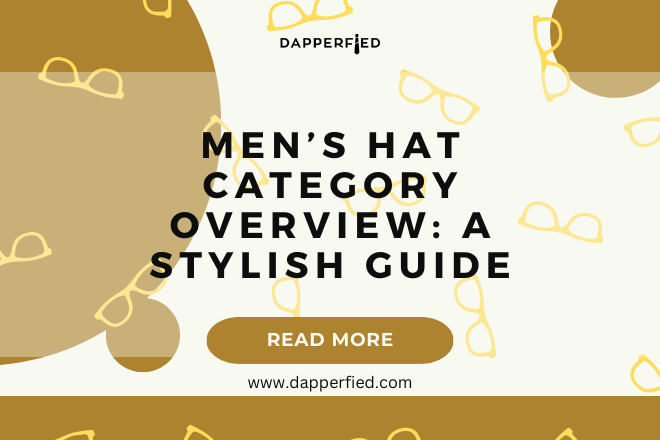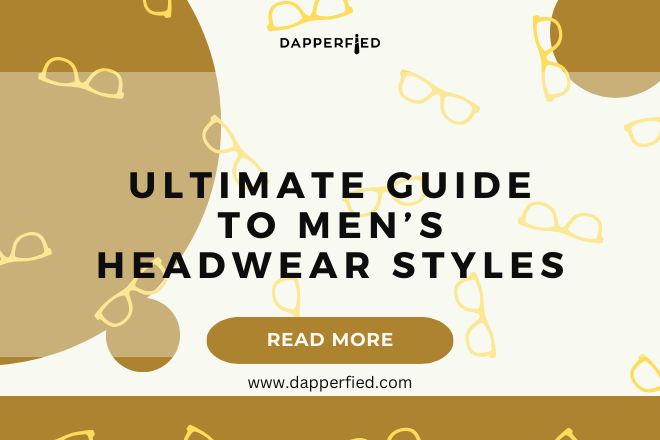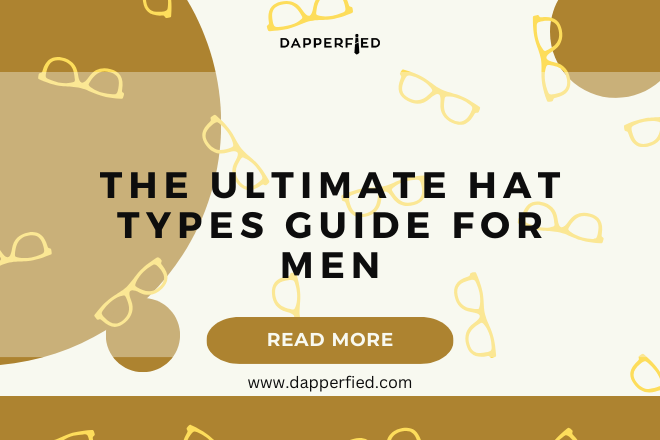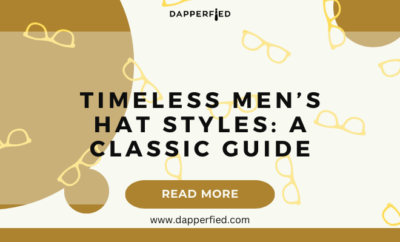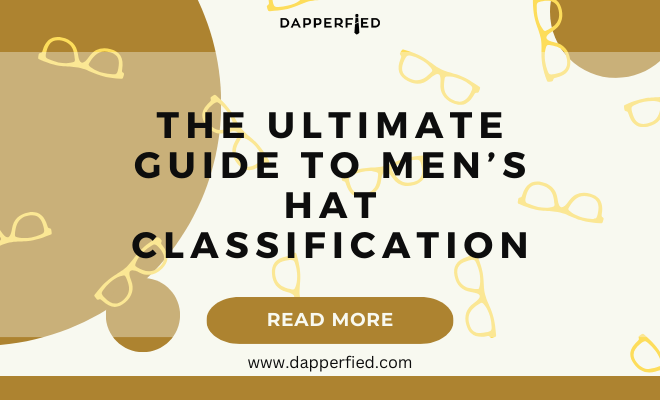
Men's Style
The Ultimate Guide to Men’s Hat Classification
Men’s hats have been an essential component of fashion for centuries, fulfilling both practical and aesthetic functions. These accessories have served to shield the head from environmental factors while simultaneously making bold fashion statements. Hats have maintained a prominent position in men’s wardrobes, with various styles ranging from the classic fedora to the casual baseball cap and the formal top hat.
The appropriate choice of headwear can enhance any ensemble and express an individual’s personality. This article will examine several aspects of men’s hats, including:
1. The historical development of men’s headwear
2.
Various hat styles and materials
3. Guidelines for selecting hats based on face shape
4. Proper hat etiquette and maintenance practices
5.
Iconic men’s hat styles that have left a lasting impact on fashion history
By exploring these topics, readers will gain a comprehensive understanding of the significance and versatility of men’s hats in fashion and culture.
Key Takeaways
- Men’s hats have been a fashion staple for centuries, serving both practical and stylish purposes.
- The historical evolution of men’s hats reflects changes in fashion, culture, and societal norms.
- Men’s hats come in a variety of styles, including fedoras, trilbies, bowler hats, and baseball caps.
- Different materials, such as wool, felt, straw, and leather, are used to make men’s hats, each offering unique characteristics.
- When choosing a men’s hat, it’s important to consider your face shape and find a style that complements your features.
Historical Evolution of Men’s Hats
Ancient Origins
In ancient Egypt, men wore conical straw hats to shield themselves from the scorching sun, while in ancient Greece and Rome, hats were worn as a symbol of social status.
The Middle Ages to the 20th Century
During the Middle Ages, men wore tall, pointed hats as a symbol of authority and power. In the 17th and 18th centuries, men’s hats became more decorative and ornate, with styles such as the tricorne and bicorn hats gaining popularity among the aristocracy. The 19th century saw the rise of the top hat as a symbol of refinement and elegance, while the 20th century brought about a wide range of hat styles, from the casual baseball cap to the sophisticated fedora.
Modern Times
Today, men’s hats continue to be an essential accessory in fashion, with a diverse range of styles to suit every taste and occasion. Men’s hats have evolved over time to reflect changes in fashion, culture, and societal norms. From functional headgear to stylish accessories, hats have remained a timeless and versatile element of men’s fashion. Whether it’s a classic Panama hat for a summer day or a cozy beanie for the winter months, there is a hat for every season and occasion. The evolution of men’s hats is a testament to their enduring appeal and their ability to adapt to changing trends while maintaining their timeless charm.
Types of Men’s Hats Based on Style

Men’s hats come in a wide variety of styles, each with its own unique characteristics and aesthetic appeal. Some of the most popular styles include the fedora, the baseball cap, the beanie, the bucket hat, the flat cap, the Panama hat, and the top hat. The fedora is a classic men’s hat with a wide brim and indented crown, often associated with sophistication and elegance.
The baseball cap is a casual and sporty style with a rounded crown and a stiff peak at the front. The beanie is a close-fitting knitted cap that is perfect for keeping warm in cold weather. The bucket hat is a casual and practical style with a wide, downward-sloping brim that provides excellent sun protection.
The flat cap, also known as a newsboy cap or ivy cap, is a rounded cap with a small stiff brim in front. The Panama hat is a lightweight and breathable straw hat that is perfect for summer wear. The top hat is a formal and elegant style with a tall, cylindrical crown and a flat brim.
Each style of men’s hat has its own unique characteristics and can be worn to complement different outfits and occasions. Whether you’re looking for a sophisticated accessory to complete your formal attire or a casual hat to add a touch of laid-back style to your look, there is a men’s hat for every taste and preference.
Types of Men’s Hats Based on Material

| Material | Description |
|---|---|
| Felt | A soft and durable material made from wool fibers that is often used for fedoras and trilbies. |
| Straw | Lightweight and breathable material made from straw or grass, commonly used for summer hats like boaters and Panama hats. |
| Wool | A warm and insulating material often used for winter hats like beanies and flat caps. |
| Leather | Durable and stylish material used for hats like cowboy hats and aviator hats. |
| Cotton | Lightweight and comfortable material used for casual hats like baseball caps and bucket hats. |
Men’s hats are made from a wide range of materials, each with its own unique properties and aesthetic appeal. Some of the most common materials used to make men’s hats include wool felt, straw, cotton, leather, and synthetic fabrics. Wool felt hats are durable and versatile, making them suitable for both formal and casual wear.
Straw hats are lightweight and breathable, making them perfect for summer wear. Cotton hats are comfortable and easy to care for, making them an excellent choice for everyday wear. Leather hats are rugged and stylish, adding a touch of edge to any outfit.
Synthetic fabric hats are lightweight and easy to care for, making them ideal for outdoor activities. The material of a men’s hat can greatly impact its appearance, durability, and functionality. Whether you prefer the classic elegance of wool felt or the laid-back charm of straw, there is a material that suits every style and occasion.
By choosing the right material for your hat, you can ensure that it not only looks great but also provides the comfort and functionality you need.
How to Choose the Right Men’s Hat for Your Face Shape
When choosing a men’s hat, it’s important to consider your face shape to ensure that the hat complements your features and enhances your overall look. Different face shapes suit different hat styles, so it’s essential to find a hat that flatters your face shape. For example, if you have a round face, opt for hats with angular lines and sharp edges to add definition to your features.
A fedora or a flat cap would be an excellent choice for this face shape. If you have a square face, look for hats with soft lines and rounded shapes to balance out your angular features. A beanie or a bucket hat would work well for this face shape.
If you have an oval face, consider yourself lucky as this face shape suits almost any hat style. Experiment with different styles to find the one that best reflects your personal style. It’s also important to consider the size of your head when choosing a men’s hat.
Make sure that the hat fits comfortably without being too tight or too loose. Additionally, consider the height of the crown and the width of the brim to ensure that they complement your facial proportions. By taking these factors into account, you can choose a men’s hat that not only looks great but also enhances your natural features.
Hat Etiquette and Maintenance

Wearing Your Hat Indoors
When wearing a hat indoors, it’s customary to remove it as a sign of respect. However, if you’re attending a formal event or wearing a formal hat like a top hat or fedora, it’s acceptable to keep it on indoors.

Storing and Cleaning Your Hat
When storing your hat, make sure to keep it in a cool, dry place away from direct sunlight to prevent damage to the material. If your hat becomes dirty or stained, follow the manufacturer’s instructions for cleaning and maintenance to ensure it retains its original appearance.
Regular Maintenance Tips
Regularly brush off any dust or debris using a soft-bristled brush to keep your hat looking clean and fresh. If your hat becomes wet, allow it to air dry naturally rather than using heat sources like hairdryers or radiators, as this can cause damage to the material.
By observing proper hat etiquette and maintenance practices, you can ensure that your men’s hat remains in excellent condition for years to come.
Iconic Men’s Hat Styles throughout History
Throughout history, there have been several iconic men’s hat styles that have left an indelible mark on fashion and culture. One of the most iconic men’s hats is the fedora, which rose to prominence in the early 20th century as a symbol of sophistication and elegance. Worn by stylish gentlemen such as Humphrey Bogart and Frank Sinatra, the fedora became synonymous with timeless style and debonair charm.
Another iconic men’s hat is the top hat, which was popularized in the 19th century as formal attire for aristocrats and gentlemen. With its tall crown and flat brim, the top hat exuded an air of refinement and prestige. The baseball cap is another iconic men’s hat that has become synonymous with casual style and sports culture.
Originally worn by baseball players in the 19th century to shield their eyes from the sun, the baseball cap has since become a staple in streetwear fashion and everyday casual wear. The beanie has also become an iconic men’s hat style, particularly in urban fashion and winter wear. With its close-fitting design and cozy knit fabric, the beanie has become a popular choice for adding a touch of laid-back cool to any outfit.
In conclusion, men’s hats have played an integral role in fashion and culture throughout history, serving both functional and fashionable purposes. From classic styles such as the fedora and top hat to casual favorites like the baseball cap and beanie, there is a men’s hat for every style and occasion. By understanding the historical evolution of men’s hats, different styles based on material and face shape considerations when choosing a hat, observing proper etiquette and maintenance practices, and appreciating iconic hat styles throughout history, men can embrace this timeless accessory with confidence and style.
If you’re interested in men’s fashion accessories, you might also want to check out this article on caring for men’s fashion watches. It provides valuable tips on how to properly care for and maintain your timepiece, ensuring that it remains in top condition for years to come.
FAQs
What are the different types of hats for men?
There are various types of hats for men, including fedoras, baseball caps, beanies, bucket hats, trilbies, flat caps, and cowboy hats, among others.
What are the characteristics of a fedora hat?
A fedora hat typically has a wide brim, a creased crown, and a ribbon or band around the base of the crown. It is often made of felt or wool and is considered a stylish and versatile option for men.
What is a baseball cap and how is it classified?
A baseball cap is a type of soft cap with a rounded crown and a stiff peak projecting in front. It is typically classified based on the closure at the back, which can be adjustable with a strap, snapback, or fitted without any closure.
What are the characteristics of a beanie hat?
A beanie hat is a close-fitting, knitted cap that is typically made of wool or other warm materials. It is known for its simple, no-frills design and is often worn for warmth during colder weather.
What is a bucket hat and how is it classified?
A bucket hat is a soft, unstructured hat with a wide and downward sloping brim. It is often classified based on the material it is made of, such as cotton, denim, or nylon, and can also feature different patterns or designs.
What are the characteristics of a trilby hat?
A trilby hat is similar to a fedora but has a shorter brim that is sharply upturned at the back and down at the front. It typically has a narrow brim and a tapered crown, and is often made of felt or straw.
What is a flat cap and how is it classified?
A flat cap, also known as a newsboy cap or ivy cap, is a rounded cap with a small stiff brim in front. It is often classified based on the material it is made of, such as tweed, wool, or cotton, and can feature different patterns or textures.
What are the characteristics of a cowboy hat?
A cowboy hat is a wide-brimmed hat with a high crown, typically made of felt or straw. It is often characterized by its curved brim and creased crown, and is associated with western and cowboy culture.

